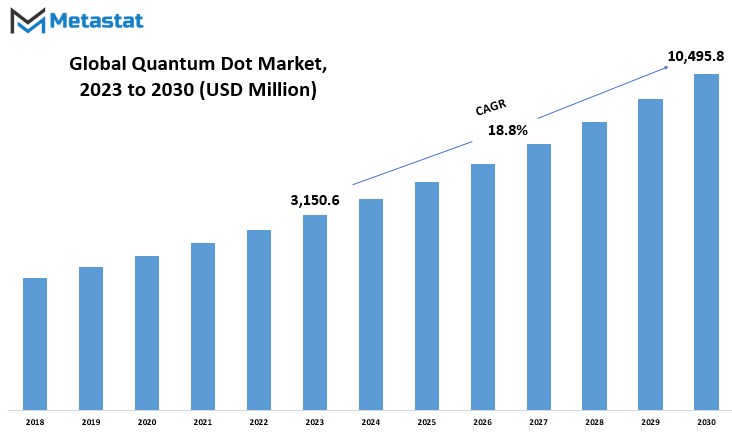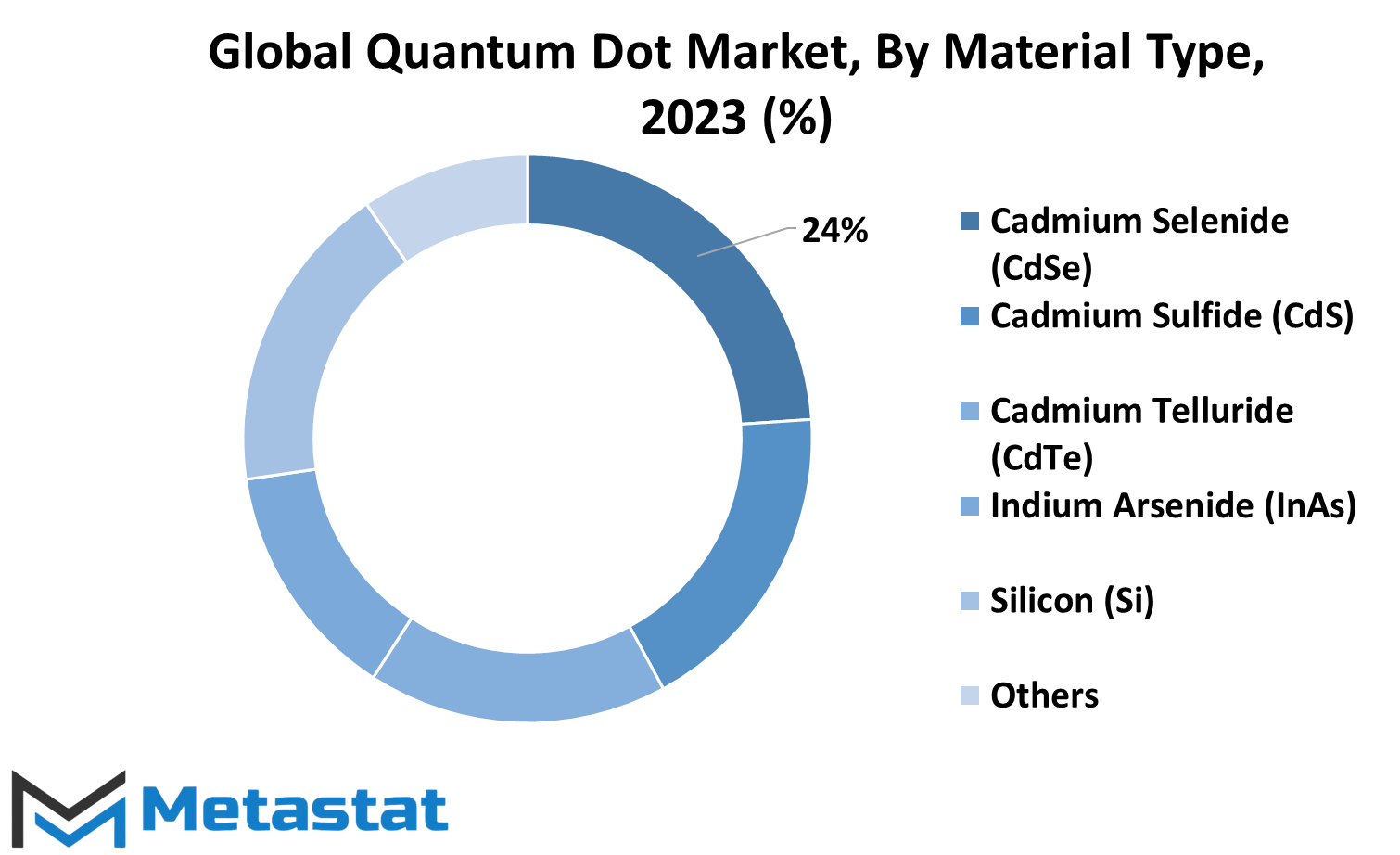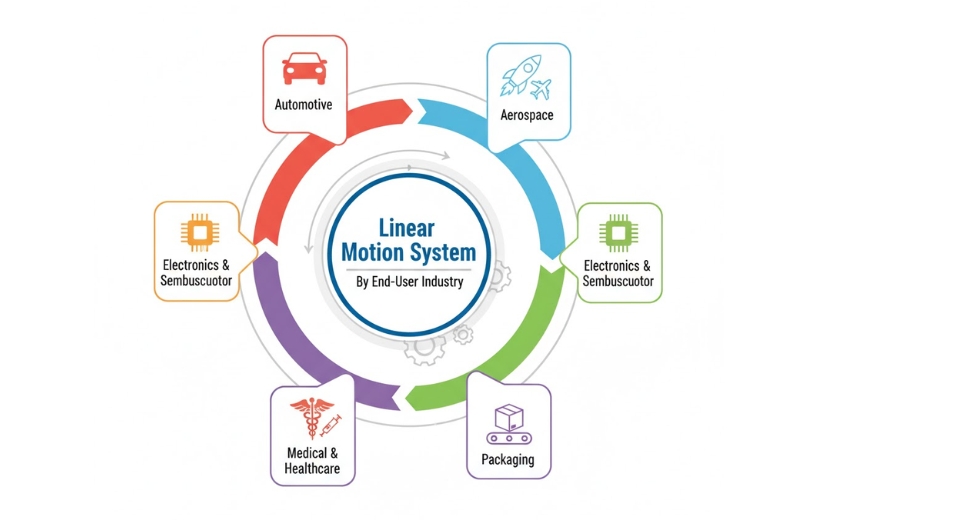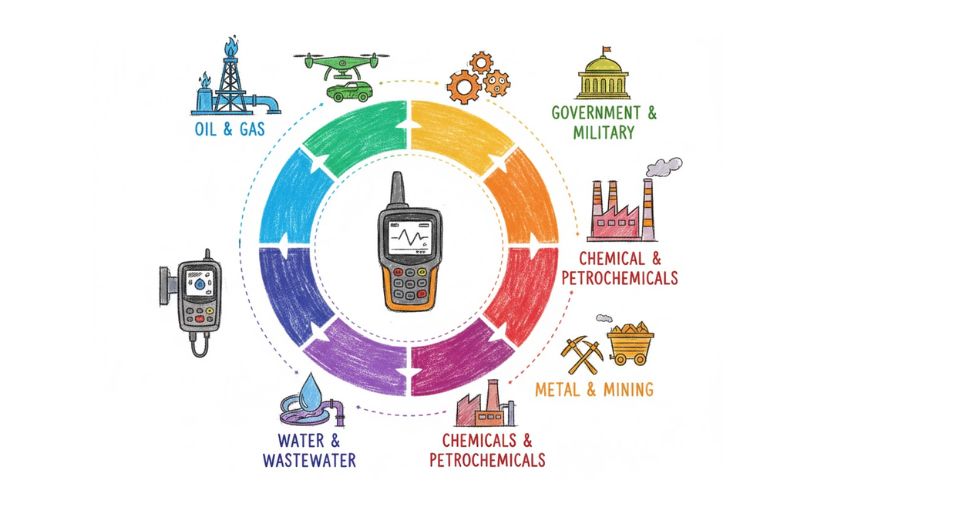MARKET OVERVIEW
In cutting-edge technology, the Quantum Dot Market stands as a testament to the relentless pursuit of innovation. Quantum dots, nanoscale semiconductor particles, have emerged as a revolutionary force, transcending conventional limits in various industries. These tiny structures, often composed of materials like cadmium selenide, exhibit unique optical and electronic properties, unlocking a myriad of possibilities in fields such as display technology, biomedical imaging, and solar cells.
The significance of quantum dots lies in their ability to manipulate and emit light in a highly controlled manner. This precise control over light emission is a game-changer, especially in the realm of display technology. Quantum dot displays, known for their vibrant colors, improved energy efficiency, and enhanced brightness, have redefined the visual experience for consumers. The vivid and lifelike images produced by quantum dot displays have become a benchmark for excellence in the consumer electronics market.
Beyond the world of displays, quantum dots play a pivotal role in biomedical imaging. Their unique optical properties make them ideal candidates for labeling and tracking biological molecules within living organisms. In medical diagnostics and research, quantum dots enable more accurate and sensitive imaging, providing researchers and healthcare professionals with unprecedented insights into cellular processes.
In solar energy, quantum dots have opened new frontiers. By leveraging the quantum confinement effect, which occurs when particles are confined to dimensions comparable to their wavelength, these nanoscale wonders enhance the efficiency of solar cells. This breakthrough has the potential to revolutionize renewable energy technologies, addressing the ever-growing demand for sustainable and efficient power sources.
The importance of the Quantum Dot Market extends beyond individual applications. Its impact reverberates through diverse sectors, fostering collaborations between researchers, engineers, and industry leaders. As quantum dot technologies continue to evolve, the market becomes a dynamic hub of innovation, driving advancements that shape the future of multiple industries.
Global Quantum Dot market is estimated to reach $10,495.8 Million by 2030; growing at a CAGR of 18.8% from 2023 to 2030.

GROWTH FACTORS
The global Quantum Dot Market is propelled by several key driving factors. The rising demand for high-quality displays and lighting technologies stands out as a primary force behind the market's growth trajectory. Quantum dots, known for their ability to enhance color quality and energy efficiency, have found extensive applications in the display and lighting industries, driving increased adoption.
However, despite the positive momentum, challenges loom on the horizon. Issues such as the high cost of quantum dot-based products and environmental concerns related to their manufacturing processes might pose obstacles to the market's continued expansion. These factors could potentially impede the widespread adoption of quantum dot technologies, limiting their penetration into mainstream markets.
Continuous advancements in quantum dot technology, coupled with ongoing research and development efforts, offer the promise of overcoming existing barriers. As technological innovations unfold, the market is expected to witness significant improvements in cost-effectiveness and environmental sustainability, mitigating the hindrances posed by cost and environmental concerns.
Looking ahead, the quantum dot market holds lucrative opportunities. The increasing integration of quantum dots in applications beyond displays and lighting, such as in the healthcare and solar energy sectors, presents avenues for substantial market growth. Quantum dots' unique properties, including their size-tunable emission and compatibility with biological systems, position them as promising candidates for applications in medical imaging and diagnostics.
Furthermore, the escalating demand for energy-efficient solutions across various industries aligns with the capabilities of quantum dots. Their potential use in solar cells, where they can enhance light absorption and energy conversion efficiency, signifies a compelling opportunity. As the global focus on sustainable technologies intensifies, quantum dots are poised to play a pivotal role in addressing energy challenges.
The global Quantum Dot Market is propelled forward by the increasing demand for enhanced displays and lighting technologies. Despite challenges related to cost and environmental considerations, ongoing advancements in technology present avenues for overcoming these hurdles. The market's future looks promising, with opportunities emerging from diversified applications and a growing emphasis on sustainability across industries. As quantum dot technologies continue to evolve, their transformative potential is expected to leave a lasting impact on various sectors, shaping a brighter and more efficient future.
MARKET SEGMENTATION
By Material Type
In the global Quantum Dot Photodetectors market, the segmentation based on material type sheds light on the diverse components that constitute this thriving industry. Each material type plays a pivotal role, contributing to the overall market dynamics.
One significant player in this intricate tapestry is Cadmium Selenide (CdSe). In 2022, this segment emerged as a notable force with a valuation of 645.1 USD Million. Its significance lies in its distinct properties and applications within Quantum Dot Photodetectors, marking it as a key contributor to the market's financial tapestry.
Cadmium Sulfide (CdS), another integral element in this market mosaic, held its ground with a value of 490 USD Million in 2022. Its contribution is unique, bringing a set of characteristics that caters to specific needs within the Quantum Dot Photodetectors realm. The market dynamics, influenced by CdS, showcase the diversity in material types and their respective impacts.
Cadmium Telluride (CdTe) occupies its own space in this thriving market, standing at a valuation of 461.5 USD Million in 2022. The distinct properties of CdTe contribute to its relevance, offering a specialized dimension to the Quantum Dot Photodetectors sector. This material type's value is a testament to its significance in the overall market landscape.
Indium Arsenide (InAs) marks its presence with a valuation of 366 USD Million in 2022. Its role within the Quantum Dot Photodetectors market is distinctive, providing a unique set of capabilities that cater to specific technological requirements. The market, enriched by the inclusion of InAs, showcases a dynamic interplay of diverse material types.
Silicon (Si), a well-known player in the technology domain, extends its influence into the Quantum Dot Photodetectors market with a valuation of 477.8 USD Million in 2022. Its familiar properties find a niche within this market, contributing to the overall technological advancements and applications in Quantum Dot Photodetectors.
The segment labeled as Others encompasses various materials, collectively valued at 262.6 USD Million in 2022. This category underlines the versatility of the Quantum Dot Photodetectors market, accommodating a spectrum of materials beyond the explicitly mentioned ones. The diverse range within the "Others" segment adds depth to the market's composition.
The market segmentation based on material type illuminates the nuanced dynamics within the global Quantum Dot Photodetectors market. Each material type, be it CdSe, CdS, CdTe, InAs, Si, or the diverse Others, contributes uniquely to the industry's growth and evolution. The market, shaped by these material elements, reflects a rich and varied landscape, showcasing the intricate interplay of technological advancements and market forces.

By Application
The worldwide market for Quantum Dot Photodetectors is categorized based on its applications. One of these applications is Quantum Optics, a sector that recorded a value of 938.2 million USD in 2022. Quantum Optics involves the study and application of quantum mechanics principles to optical systems. Moving on, another significant application is QD-based security and surveillance. Quantum Dots (QD) play a pivotal role in enhancing the performance of security and surveillance systems. This segment's contribution to the market was notable in 2022.
Renewable Energy stands as another vital application of Quantum Dot Photodetectors. The market's involvement in this sector is indicative of the technology's relevance and impact on the renewable energy landscape. Quantum Dot Photodetectors contribute to the advancement of renewable energy technologies, showcasing their multifaceted utility.
Optoelectronics is yet another application segment worth noting, with a valuation of 802.4 million USD in 2022. Optoelectronics deals with devices that convert electrical signals into light and vice versa. The noteworthy value attached to this segment indicates the significance of Quantum Dot Photodetectors in this field, underlining their role in advancing optoelectronic technologies.
The global Quantum Dot Photodetectors market, when viewed through the lens of applications, reveals a diverse landscape. Quantum Optics, QD-based security & surveillance, Renewable Energy, and Optoelectronics emerge as pivotal domains where Quantum Dot Photodetectors make substantial contributions, each reflecting the technology's adaptability and impact in various spheres.
By End-user
In the expansive landscape of the global Quantum Dot Photodetectors market, a comprehensive categorization based on end-users delineates its multifaceted applications. Among these end-user segments, the Medical Devices category stands out, registering a noteworthy valuation of 379.8 USD Million in 2022.
Another pivotal domain within the Quantum Dot Photodetectors market is the QD Display Devices segment, which garnered a substantial valuation of 374.5 USD Million in the same year. The significance of Quantum Dot technology extends further into the realm of QD Laser Devices, carving a niche for itself in the market.
A noteworthy facet of the market is the QD Photovoltaic Devices segment, which achieved a commendable valuation of 344.3 USD Million in 2022. This segment underscores the versatile applications of Quantum Dot Photodetectors, particularly in the realm of photovoltaics.
The Quantum Dot Chip segment, with a valuation of 398.7 USD Million in 2022, stands as a testament to the technological prowess embedded in Quantum Dot Photodetectors. This specific application showcases the integration of Quantum Dot technology into chip design, marking a significant stride in the technological landscape.
In addition to the segments, the market is further enriched by the presence of QD Sensors and QD Light-emitting Devices, each contributing to the diverse tapestry of applications within the Quantum Dot Photodetectors market.
This nuanced segmentation not only reflects the market's dynamism but also highlights the pivotal role played by Quantum Dot Photodetectors across various industries. The tangible impact of Quantum Dot technology is palpable in each segment, shaping the market's trajectory and reinforcing its status as a technological frontrunner.
REGIONAL ANALYSIS
The global Quantum Dot Market, when analyzed based on geography, offers a comprehensive understanding of the market's reach and impact across different regions. It provides insights into the distribution and adoption of Quantum Dot technology on a global scale.
This geographical perspective allows us to discern trends and patterns in the Quantum Dot Market, recognizing how the technology is embraced and utilized by diverse regions worldwide. It enables stakeholders to identify areas of high demand, potential growth, and specific market dynamics unique to each geographic location.
From North America to Asia-Pacific, the global Quantum Dot Market showcases a diverse landscape of opportunities and challenges. North America, being an early adopter of advanced technologies, reflects a robust presence in the Quantum Dot Market. The market dynamics in this region are influenced by factors such as technological infrastructure, consumer awareness, and industry collaborations.
In Europe, the Quantum Dot Market demonstrates its footprint across various countries, each contributing to the overall growth. The market dynamics in Europe are shaped by regulatory frameworks, economic conditions, and the integration of Quantum Dot technology into existing industries.
Moving to the Asia-Pacific region, we witness a burgeoning Quantum Dot Market fueled by the rapid technological advancements and the growing adoption of electronic devices. Asia-Pacific's market dynamics are influenced by factors like population demographics, consumer preferences, and the evolving manufacturing landscape.
The Middle East and Africa, although in the nascent stages of Quantum Dot adoption, contribute to the global market's tapestry. Here, market dynamics are shaped by factors such as economic development, infrastructure investments, and the increasing awareness of Quantum Dot applications.
South America, with its unique market characteristics, adds another layer to the global Quantum Dot Market. Market dynamics in this region are influenced by factors like regulatory environments, industrial partnerships, and the region's economic landscape.
When we dissect the global Quantum Dot Market based on geography, we gain valuable insights into the market's varied dynamics. It allows us to appreciate the technology's impact on a global scale, understanding how different regions contribute to and shape the overall trajectory of the Quantum Dot Market. This geographical perspective serves as a crucial lens for stakeholders, helping them navigate the nuances of the market and make informed decisions in an increasingly interconnected world.
COMPETITIVE PLAYERS
The global Quantum Dot Market is marked by the presence of key players, with Nanoco Group plc and Nanosys Inc. standing as prominent figures in the Quantum Dot industry. These entities navigate the market landscape, contributing to its dynamism and innovation. Nanoco Group plc, with its strategic initiatives, shapes the trajectory of Quantum Dot technologies. Simultaneously, Nanosys Inc. plays a pivotal role in the industry's development, showcasing the impactful role of these key players in steering the market.
Nanoco Group plc brings its expertise to the Quantum Dot Market, driving advancements and applications in various sectors. The company's initiatives reverberate in the market, influencing the adoption and integration of Quantum Dot technologies across diverse domains. Their contributions extend beyond mere market presence; they actively shape the narrative of Quantum Dot applications.
Likewise, Nanosys Inc. stands as a force shaping the Quantum Dot industry. The company's endeavors reflect a commitment to innovation, pushing the boundaries of Quantum Dot technologies. Nanosys Inc. contributes to the market's evolution, with a focus on applications that span a wide array of industries. Their role extends beyond mere participation, illustrating how key players are instrumental in steering the Quantum Dot Market towards growth and relevance.
Together, Nanoco Group plc and Nanosys Inc. exemplify the influence key players wield in the Quantum Dot Market. Their contributions go beyond individual market shares; they actively contribute to the industry's vitality, fostering innovation and shaping the technological landscape. As the Quantum Dot Market continues to expand, the role of key players remains central, propelling the industry forward and ensuring its resilience in the face of technological challenges and opportunities.
Quantum Dot Market Key Segments:
By Material Type
- Cadmium Selenide (CdSe)
- Cadmium Sulfide (CdS)
- Cadmium Telluride (CdTe)
- Indium Arsenide (InAs)
- Silicon (Si)
- Others
By Application
- Quantum Optics
- QD based security & surveillance
- Renewable Energy
- Optoelectronics
By End-user
- Medical devices
- QD Display devices
- QD Laser Devices
- QD Photovoltaic Devices
- Quantum Dot Chip
- QD Sensors
- QD Light-emitting Devices
Key Global Quantum Dot Industry Players
- Nanoco Group plc
- Nanosys Inc.
- Najing Technology Co., Ltd.
- Ocean NanoTech, LLC
- Quantum Materials Corp.
- Samsung Electronics Co., Ltd.
- Avantama AG
- UbiQD
- Quantum Solutions
- Merck KGaA
WHAT REPORT PROVIDES
- Full in-depth analysis of the parent Industry
- Important changes in market and its dynamics
- Segmentation details of the market
- Former, on-going, and projected market analysis in terms of volume and value
- Assessment of niche industry developments
- Market share analysis
- Key strategies of major players
- Emerging segments and regional growth potential







 US: +1 3023308252
US: +1 3023308252






